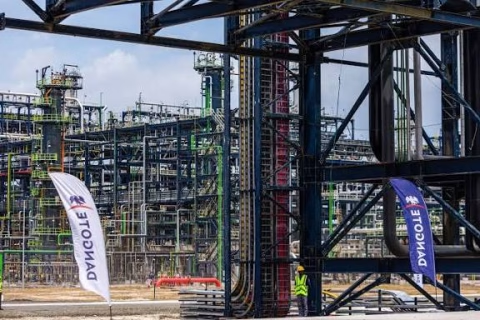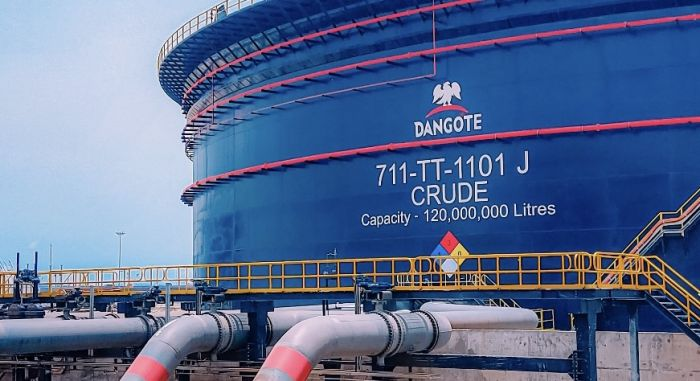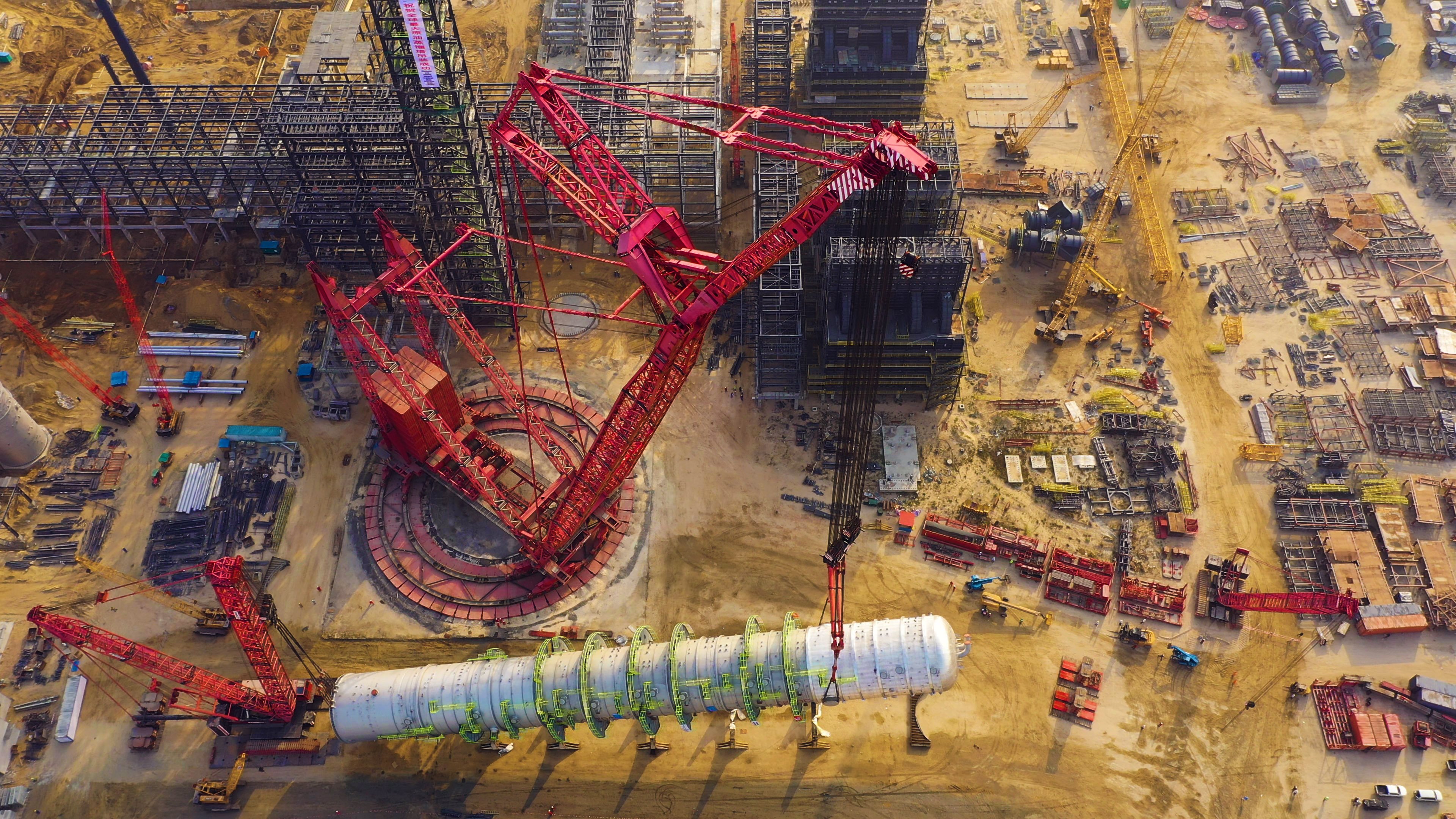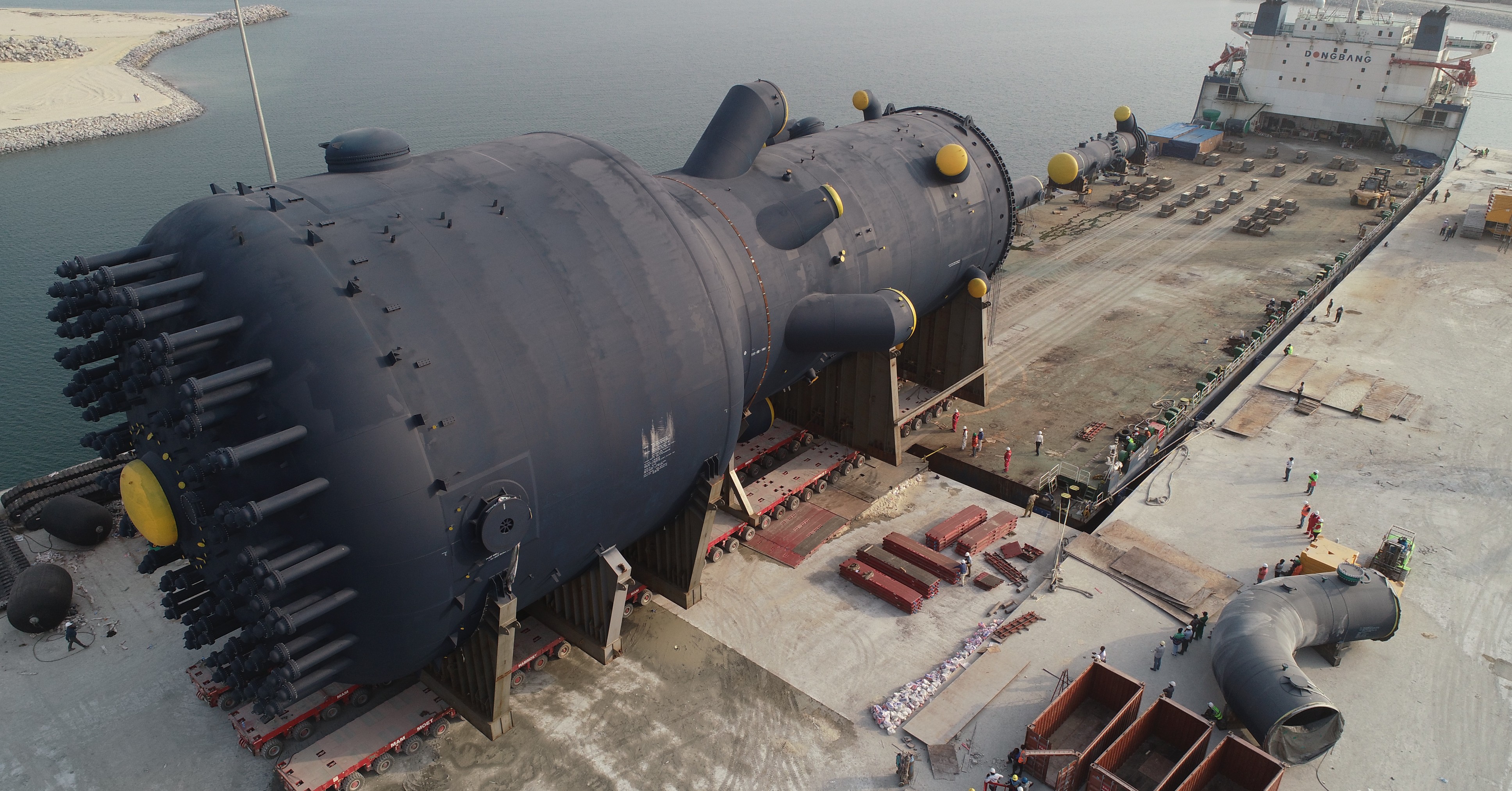Updated November 26, 2025:
Dangote Group has announced that it has entered a strategic partnership with US-based Honeywell to support the Dangote refinery expansion project. The Group noted collaboration would provide advanced technology and services. Furthermore, this would translate to enabling the refinery increase its processing capacity to 1.4 million barrels per day by 2028. The Group explained that through the agreement, Honeywell would supply specialized catalysts, equipment and process technologies. Conversely, this will allow the refinery to process a broader slate of crude grades efficiently. It would also enhance product quality and operational reliability.
Besides, Dangote will also be scaling up its polypropylene capacity to 2.4 million metric tons annually using Honeywell’s Oleflex technology. Polypropylene is a key industrial material widely used across packaging, manufacturing, and automotive applications. The group is also progressing with the next phase of its fertilizer growth plan in Nigeria. Aliko Dangote has noted that the expansion reflects the group’s belief in Africa’s potential to achieve energy security.
Furthermore, it highlights commitment in transforming its economy from being an exporter of raw crude to a hub for refined petroleum products. He estimated that the refinery’s revenue could exceed $55 billion annually. This would make it one of the most valuable industrial assets on the African continent. Dangote Group is expanding its portfolio across Africa as they recently launched the Gode oil refinery and fertilizer project in Ethiopia.

Updated on October 27, 2025- The refinery has made an announcement revealing the expansion plans of the facility from 650,000 barrels per day to 1.4 million bpd.
The President of the Dangote Group, Alhaji Aliko Dangote, made the announcement during a press briefing in that was held in Lagos on Sunday.
Flanked by his friend, the Chairman of First Bank, Mr Femi Otedola, Dangote said this would make the refinery the largest in the world.
Furthermore, Dangote said that the construction work for the expansion is expected to begin without further delay.
The New Capacity after Expansion Revealed
“We are expanding the Dangote Petroleum Refinery from 650,000 barrels per day to 1.4 million barrels per day.
“Upon completion, this will make it the largest refinery in the world, surpassing the Jamnagar Refinery in India,” he said.
Expansion of Dangote Refinery to Create Employment
Additionally, Dangote stated that 65,000 workers would be needed for the construction exercise. Out of the overall number of workers, 85 per cent would be Nigerians.
Dangote added that the refinery would also ramp up its power generation from 500MW to 1,000 MW.
Furthermore , Dangote stated that the refinery would produce Euro 6 standard, up from the current Euro 5 spec.

Dangote Refinery to be Listed in the Stock Exchange in 2026
Africa’s richest man noted that the refinery would be listed on the stock exchange in 2026, giving Nigerians the opportunity to be shareholders.
The billionaire businessman appreciated President Bola Tinubu for his support.
“The expansion is expected to be completed in three years”, he said.
Dangote Seeks $5 Billion Loan from Afreximbank for the Expansion
The African Export-Import Bank (Afreximbank) revealed that Aliko Dangote is looking for an extra $5 billion to expand his Lagos refinery.
During his inaugural address at Afreximbank’s investiture ceremony that was held in Cairo, George Elombi, the new president and chairman of Afreximbank, revealed that Dangote personally shared the plan. Also, he confirmed that the bank would explore all possible financing avenues.
He said, “Alhaji Dangote informed me this morning of his intention to secure an extra $5 billion to expand the refinery.
“We have agreed to seek the funds wherever necessary, including through Afreximbank and individual investors.”
Other Refineries in Nigeria
With refineries such as the Dangote Petroleum Refinery and the Ogun State Refinery that was launched by GAIL recently, Nigeria is clearly emerging as a leading oil producer and exporter in Africa. These facilities play a key role in contributing to the economy of Nigeria through job creation and exports.
Reported on September 5, 2025
The Dangote Petroleum Refinery has officially commenced production of petroleum products in Lagos, Nigeria. The petroleum refinery is deemed to be one of Africa’s largest on many scales. The Dangote Group planned the construction of a world-class new refinery. The project aims to reduce Nigeria’s reliance on imported energy and avail close to 30,000 new jobs. To support the drive for growth, Africa is looking to reduce reliance on imports; producing more of its own energy and raw materials.
In Nigeria, this drive is led by businesses such as the Dangote Group of Companies, which is putting the finishing touches on the continent’s largest oil refinery in Lekki Free Zone, Lagos State. It was a project that required some truly massive moves. The implementation and construction of the project was assigned to the US-headquartered Mammoet company. Being Africa’s largest, the Dangote Refinery will be complimented with projects such as the Nigeria-TotalEnergies deepwater oil contract that will see increase in oil production in the country and the refinery.
The Challenges Faced by the Dangote Refinery Expansion Project During Construction.
One of the major challenges that Mammoet faced during the construction of the Dangote Petroleum Refinery project is heavy lifting. Transportation of the equipment to the transportation site also proved a challenge. For instance, the journey from Dangote’s new, purpose-built jetty to the construction site was more of a commute than a transportation; covering some 10km. Over 52,000t of components were planned for construction – including a 2,000t crude column that is the largest ever fabricated, and the heaviest. On the challenge of heavy lifting, two of Mammoet’s largest super heavy lift ring cranes – the PTC 200 DS and PT 50 – completed key lifts at the refinery. The combination of mobility offered by crawler cranes on site and the ring cranes’ sheer lifting power – over 3,000t. This meant equipment was on-site to meet a wide range of lift requirements.
The Significance of the Dangote Refinery Expansion Project.
Once fully operational, the Dangote refinery expansion project will process 1.4 million barrels of crude oil per day. It will transform the local economy, creating thousands of jobs. It will also help to secure a more prosperous future for African industry. The project also improved some of the roads that were used in the transportation of the materials needed for the construction. Following discussions early in the project, Mammoet advised Dangote on roads that needed civil works to support the planned traffic. The scope entailed the widening and leveling turns. Works were undertaken to ensure that these roads were well prepared for the weight of cargo they would carry. Furthermore, particular interest was placed on the ones between the site and its jetty.
The Uniqueness of the Dangote Project
The Dangote Petroleum refinery project was enabled due to Mammoet’s expertise and large global network of equipment. The project also called for a balance of planning, expertise, and the smart use of various equipment to ensure delivery. It also ensured that the right solution was on hand when needed. The continent’s largest refinery also demanded a high degree of flexibility in when and how items are needed to be transported and installed. The project was unique in the scale of its development and the manpower needed. Expert planning was required to tackle the demanding scale of the Dangote refinery. This was in terms of cargo weights, volumes, and the vast web of delivery schedules. All the while, Enviro-Mat provided the foundation for this transformation – turning barren swampland into a platform for meaningful economic growth.
Also read:
Dangote oil refinery in Nigeria, Africa’s largest of its kind
Dangote Petroleum Refinery and Petrochemicals constructs a Jetty in Lekki




